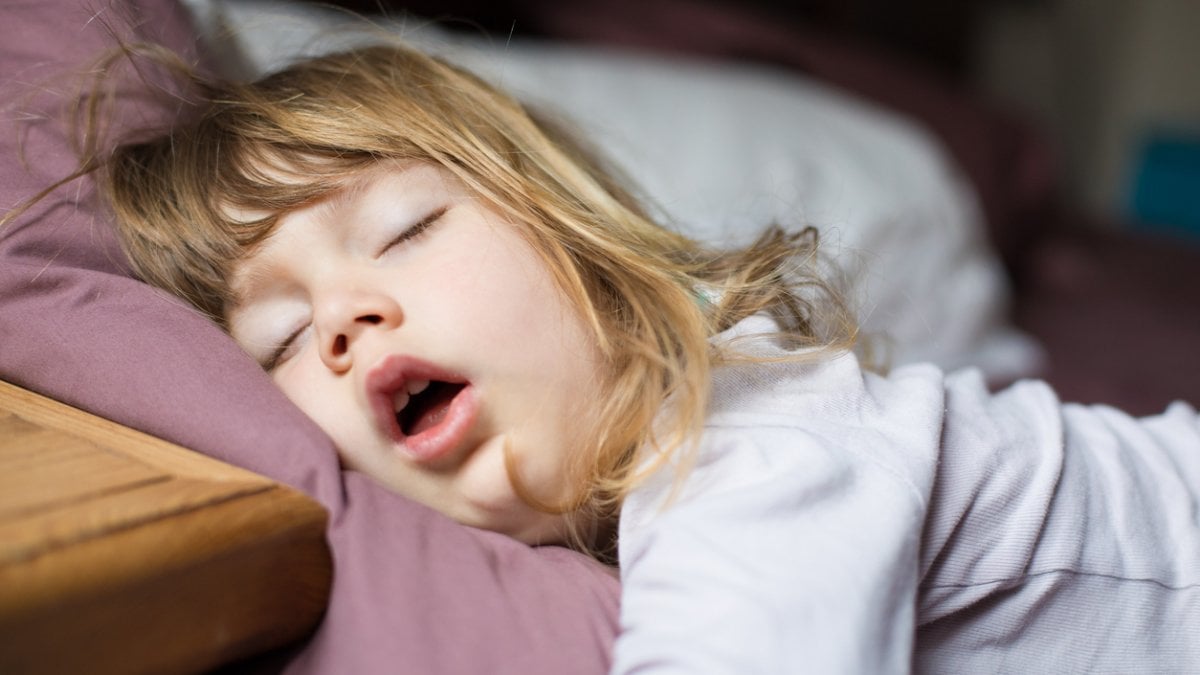
Pediatric obstructive sleep apnea
Pediatric obstructive sleep apnea is a sleep disorder in which your child’s breathing is partially or completely blocked repeatedly during sleep
The condition is due to narrowing or blockage of the upper airway during sleep.
There are differences between pediatric obstructive sleep apnea and adult sleep apnea
While adults usually have daytime sleepiness, children are more likely to have behavioral problems.
The underlying cause in adults is often obesity, while in children the most common underlying condition is enlargement of the adenoids and tonsils.
Early diagnosis and treatment are important to prevent complications that can affect children’s growth, cognitive development and behavior.
During sleep, signs and symptoms of pediatric sleep apnea might include:
- Snoring
- Pauses in breathing
- Restless sleep
- Snorting, coughing or choking
- Mouth breathing
- Nighttime sweating
- Bed-wetting
- Sleep terrors
Infants and young children with obstructive sleep apnea don’t always snore. They might just have disturbed sleep.
CHILD HEALTH: LEARN MORE ABOUT MEDICHILD BY VISITING THE BOOTH AT EMERGENCY EXPO
During the day, children with sleep apnea might:
- Perform poorly in school
- Have difficulty paying attention
- Have learning problems
- Have behavioral problems
- Have poor weight gain
- Be hyperactive
When to see a doctor
Make an appointment with your child’s doctor if your child consistently wakes up in the morning feeling tired and has behavioral problems.
Causes
Obesity is a common factor underlying obstructive sleep apnea in adults.
But in children the most common condition leading to obstructive sleep apnea is enlarged tonsils and adenoids.
However, obesity also plays a role in children.
Other underlying factors can be craniofacial anomalies and neuromuscular disorders.
Besides obesity, other risk factors for pediatric sleep apnea include having:
- Down syndrome
- Abnormalities in the skull or face
- Cerebral palsy
- Sickle cell disease
- Neuromuscular disease
- History of low birth weight
- Family history of obstructive sleep apnea
Pediatric obstructive sleep apnea can have serious complications, including:
- Failure to grow
- Heart problems
- Death
Diagnosis
To diagnose pediatric sleep apnea, the doctor will review your child’s symptoms and medical history and conduct a physical exam.
Your child may have an examination of the neck, mouth and tongue, and adenoids.
Your doctor might order several tests to diagnose the condition.
Tests might include:
Polysomnogram. Doctors evaluate your child’s condition during an overnight sleep study. This test uses sensors applied to the body to record brain wave activity, breathing patterns, snoring, oxygen levels, heart rate and muscle activity while your child sleeps.
Oximetry. If doctors strongly suspect obstructive sleep apnea, and a full polysomnogram isn’t needed or available, an overnight recording of oxygen levels might help make the diagnosis. Oximetry can be done at home. However, it sometimes fails to give the diagnosis, in which case your child will still need to have a polysomnogram.
Electrocardiogram. In an electrocardiogram, sensor patches with wires attached (electrodes) measure the electrical impulses given off by your child’s heart. Doctors may use this test to determine if your child has an underlying heart condition.
Treatment
Your doctor will work with you to find the most appropriate treatment for your child’s sleep apnea.
Treatment might include:
Medications. Topical nasal steroids, such as fluticasone (Dymista) and budesonide (Rhinocort, Pulmicort Flexhaler, others), might ease sleep apnea symptoms for some children with mild obstructive sleep apnea. For kids with allergies, montelukast (Singulair) might help relieve symptoms when used alone, or with nasal steroids.
Removal of the tonsils and adenoids. For moderate to severe sleep apnea, your doctor might refer your child to a pediatric ear, nose and throat specialist to discuss removing the tonsils and adenoids. An adenotonsillectomy (ad-uh-no-ton-sil-EK-tuh-me) might improve obstructive sleep apnea by opening the airway. Other forms of upper airway surgery might be recommended, based on the child’s condition.
Positive airway pressure therapy. In continuous positive airway pressure (CPAP) and bilevel positive airway pressure (BPAP), small machines gently blow air through a tube and mask attached to your child’s nose, or nose and mouth. The machine sends air pressure into the back of your child’s throat to keep your child’s airway open. Doctors often treat pediatric obstructive sleep apnea with positive airway pressure therapy when medications or removal of adenoids and tonsils is not effective.
Proper fitting of the mask and refitting as the child grows can help the child tolerate the mask over the face.
Oral appliances. Oral appliances, such as dental devices or mouthpieces, may be recommended. Some devices help to expand the palate and nasal passages, or move your child’s bottom jaw and tongue forward to keep your child’s upper airway open. Only some children benefit from such devices.
Read Also:
Emergency Live Even More…Live: Download The New Free App Of Your Newspaper For IOS And Android
Obstructive Sleep Apnoea: Symptoms And Treatment For Obstructive Sleep Apnoea
Obstructive Sleep Apnoea: What It Is And How To Treat It
Grinding Your Teeth While You Sleep: Symptoms And Remedies For Bruxism
Long Covid And Insomnia: ‘Sleep Disturbances And Fatigue After Infection’
Sleep Disorders: The Signs Not To Be Underestimated
Sleepwalking: What It Is, What Symptoms It Has And How To Treat It
What Are The Causes Of Sleepwalking?
Catatonia: Meaning, Definition, Causes, Synonyms And Cures
Difference Between Catatonia, Catalepsy And Cataplexy
Cataplexy: Cause, Meaning, Sleep, Cure And Etymology


